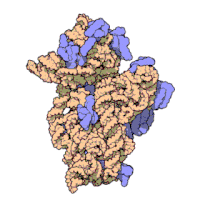
Photo from wikipedia
High-throughput sequencing has substantially improved our understanding of fungal diversity. However, the short read ( Click to show full abstract
High-throughput sequencing has substantially improved our understanding of fungal diversity. However, the short read (<500 bp) length of current second-generation sequencing approaches provides limited taxonomic and phylogenetic resolution for species discrimination. Longer sequences containing more information are highly desired to provide greater taxonomic resolution. Here, we amplified full-length rRNA operons (~ 5.5 kb) and established a corresponding Fungal rRNA Operon Database for ONT sequences (FRODO), which contains ONT sequences representing 8 phyla, 41 classes, 109 orders, 256 families, 524 genera and 1,116 species. We also benchmarked the optimal method for sequence classification and determined that the RDP classifier based on our FRODO database was capable of improving the classification of ONT reads, with an average of 98%-99% reads correctly classified at the genus or species level. We investigated the applicability of our approach in three representative mycobiomes, namely, the soil, marine and human gut mycobiomes, and found that the gut contains the largest number of unknown species (over 90%), followed by the marine (42%) and soil (33.8%) mycobiomes. We also observed a distinct difference in the composition of the marine and soil mycobiomes, with the highest richness and diversity detected in soils. Overall, our study provides a systematic approach for mycobiome studies and revealed that the previous methods might have underestimated the diversity of mycobiome species. Future application of this method will lead to a better understanding of the taxonomic and functional diversity of fungi in environmental and health-related mycobiomes.
Journal Title: Molecular ecology
Year Published: 2022
Link to full text (if available)
Share on Social Media: Sign Up to like & get
recommendations!